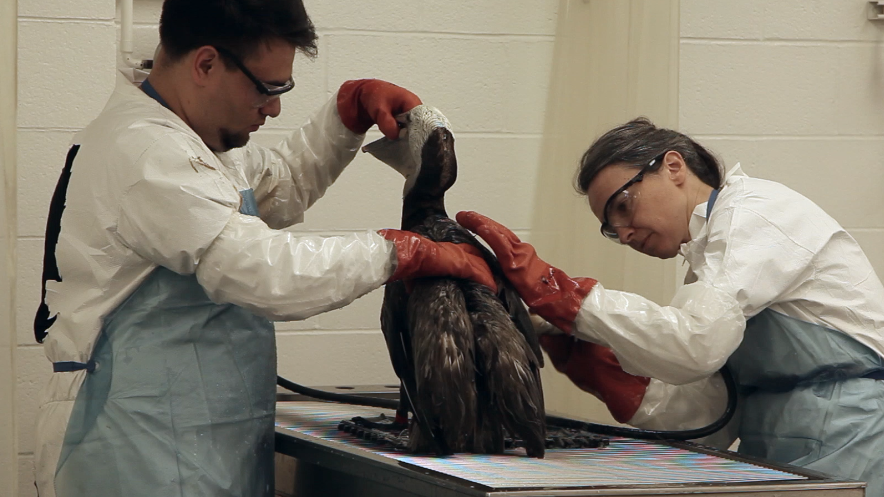Santa Barbara Filmmakers Take Center Stage
Homegrown Features, Shorts, Short Docs, and Reel Nature Films

Many Santa Barbara filmmakers once again get to see their work on the big screen during the Santa Barbara International Film Festival. This year includes four feature films and group screenings of shorts, short docs, and Reel Nature docs. Here’s the lineup.
Features
Broke: The Santa Barbara Oil Pipeline Spill of 2015: The global environmental movement began with the Santa Barbara oil spill of 1969, and yet a similar, if less catastrophic, disaster occurred again in 2015, when the Plains All American Pipeline near Refugio Beach began spilling crude into the pristine waters of the Gaviota Coast. Longtime UCSB professor and sporadic documentarian Gail Osherenko was on the scene within hours, and her quest to understand how this could happen again forms the basis of this hour-long doc.
The blow-by-blow explanation of events questions why it took so long for the recovery work to kick off, while also showing how diligent and seemingly effective that effort was once initiated. It evaluates the spill’s impacts on the landscape, marine mammals, birds, and humans, from chemical pneumonia to commercial fishing woes, and reveals how susceptible to rupture these pipelines are across the country.
“Hopefully the 2015 onshore spill from a pipeline will result in real changes to policy,” said Osherenko, who’d never done a film of this size and scope. “I don’t think the spill has had the striking effect of the 1969 wake-up call, but it has alerted our community to the risk of underground oil pipelines.” —Matt Kettmann
We Are Galápagos: See our feature.
Living in the Future’s Past: See our Climate Change roundup.
Nelson Algren Live: See our Willem Dafoe essay.
Short Docs
Cascarón: The making of Cascarón started as a conversation over drinks in the reincarnated version of Jimmy’s Oriental Gardens, which was the subject of filmmaker Casey McGarry’s first documentary effort in 2015. McGarry was shooting the breeze with Chris Price, an eighth-generation Californian, over the subject of cascarones, the wonderful confetti eggs that transform Santa Barbara city streets into a landscape of Jackson Pollock–like canvasses every Fiesta.
Out of that conversation, this sweet and touching 16-minute documentary was hatched. Along the way, I got briefly sucked into this venture, acting as enthusiastic cheerleader and occasional interviewer. I, too, am a nut for cascarones.

For McGarry, an Irish Catholic paddy boy from the Mesa whose parents both taught ESL, making Cascarón was his way of expressing gratitude to the city’s Latino/a cultures. The film is visually lyrical in the extreme, haunting and suffused with not-so-subliminal melancholy.
How could it not be? Santa Barbara has always embraced elements of Hispanic culture while keeping the people of that culture at arm’s length. Nowhere is that more in evidence than during the city’s fabled Fiesta celebration. Throw in the long shadow cast by Donald Trump, and it’s a documentary screaming to be made.
McGarry, however, is no polemicist. To the extent he makes such political points, he does so in a decidedly un-pointed fashion. It’s clearly the case that cascarones — made largely by Mexican immigrants and their descendants and bought largely by Anglos — reflect the city’s subtle but implacable Juan Crow separation. McGarry hints at this situation and illustrates it, but doesn’t pick at it.
Instead, he provides gentle close-ups on a handful of families who make the ubiquitous cascarones, allowing them to explain the how and why of things. Along the way, he mixes in footage from Fiesta, drooling pan shots of cascarones on parade, and of course, cascarones in full, festive explosion — the cascarón equivalent of the orgasm.
Left unanswered for another day are the origins of the cascarón and why Santa Barbara might be the only place on the planet where the cascarón survives with such joyous exuberance. Likewise, we don’t see what’s really involved in getting so many of these magical eggs emptied, filled, and painted in time for Fiesta. I have no shortage of crazy cascarón adventures of my own; I would have liked to hear others’.
Perhaps one day there will be a more lingering follow-up. In the meantime, this qualifies as a sweet cinematic kiss to a wonderful tradition. —Nick Welsh
Also included in the Short Docs screening are A Solstice in Santa Barbara, an impressively thorough, behind-the-scenes look at the workshop that powers our annual summer parade; Out of the Ashes, a look at the Whittier Fire’s effects with questions on whether we’re living too close to wildfire zones; Crossing the Channel, about Rachel Horn’s attempt to swim from Anacapa Island to the mainland; Soul of the City, about Francisco Aguilera, the unsung hero of East Beach; and The Tipping Point, which documents the efforts of Santa Barbara organizations to combat climate change. —Matt Kettmann
Narrative Shorts
There’s promising creativity and craft in this batch of films, which range from funny and quirky to moody and artsy. Me, My Phone and I, made by local-boy-turned-Disney-wunderkind Luke Mullen, takes our obsession with smartphones into uncharted, trapped-behind-the-glass territory. Mullen hopes his film resonates with his digitally addicted generation, explaining, “I wanted to create a film where our electronics physically can harm us, in an action-packed adventure that takes the viewers into a literal iPhone.”
Virtually Yours explores a similar vein, using virtual reality to grow a relationship between two young women while also showing off some great Santa Barbara locations along the way.
In the funny department, Long Term Delivery follows a special post-office agent whose job is to deliver lost and forgotten parcels to their intended recipients. With great, slightly sociopathic acting from Peter Smith, it’s an original romp, and the premise could easily be grown into a feature-length or serial project. Much shorter, and possibly controversial, is The Red Flag, in which a hero tries to alert would-be lovers to the likelihood that their partners actually prefer the same sex.
Pet-loving emotions lead the way in Aeris, about a troubled couple’s attempt to save their sick cat, and Cuba serves as the location for Mi Dulcinea, Max Barbakow’s latest about a tae-kwon-do-obsessed kid who tries to win over a woman much older than he is. —Matt Kettmann
4·1·1
The Santa Barbara Documentary Shorts will screen at the Closing Night Film event on Saturday, February 10, 8 p.m., at The Arlington Theatre (1317 State St.).



